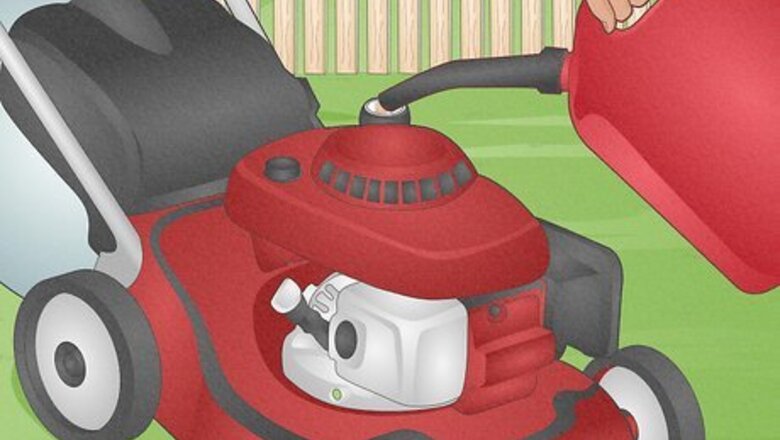
views
Confirm you have gas.
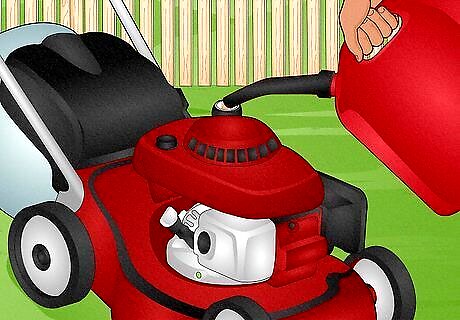
Start with the obvious and make sure the tank isn’t empty. If you can’t remember the last time you filled the gas tank, just rule this out first before you start tinkering with the mechanical components of your lawn mower. Check the tank’s fuel levels and add gas if it’s empty. If you have a corded mower, make sure the outlet you’re using is good by testing it with a phone charger or some other item you know works. If you have a riding mower, check the oil tank, too. Riding mower engines often require dedicated oil, and the tank might be empty.
Check the air filter.
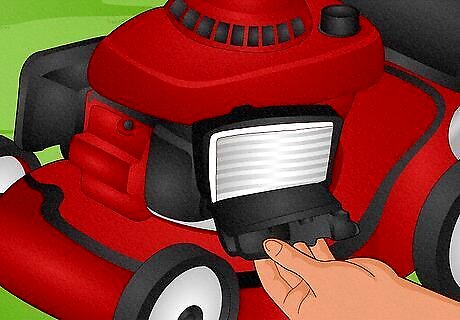
Clean or replace the carburetor filter if it’s dirty. A blocked-up filter will block the engine from starting. Refer to your manual to locate the air filter (it’s usually in a container on the side of the engine, near the primer button). Remove the filter to see if it’s dirty. If it’s a paper filter, replace it with a fresh one since these are designed to be discarded periodically. If it’s a plastic, foam, or metal filter, clean it thoroughly with dish soap and water. If the filter is damaged, replace it. Mower filters aren’t universal, but most companies use the same filter for multiple models. So, if you’ve got a Black & Decker mower, a standard Black & Decker filter should fit.
Empty the mower deck.
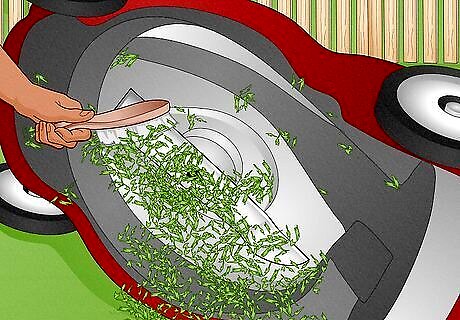
If the mower deck is full of clippings, the starter rope won’t pull. The mower deck is the disc-shaped area where the blades spin. If that area is clogged, pulling the starter rope will be impossible (or extremely difficult). Flip the mower over and carefully remove any clumps of grass before trying to start the engine again. Those blades are sharp, so be careful and don’t touch the blades directly as you work. If you’ve got a bag attachment and that bag is full, the grass won’t have anywhere to go when you run the mower and it’ll just clog the deck. Empty the bag if it’s full.
Inspect the spark plug.
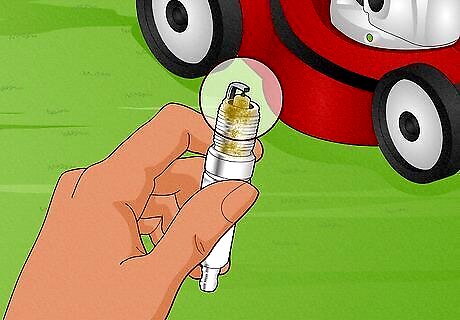
Clean the spark plug if it’s corroded, or replace it. The spark plug is responsible for providing the spark that ignites the fuel and air in the engine, but without that spark, the mower won’t start. Refer to the manual to determine where your spark plug is located. Use a socket wrench to remove that plug and inspect it. If there’s corrosion, clean the spark plug before reinstalling it. If it still won’t work, purchase a replacement spark plug. To identify which spark plug you need, search online for one specifically designed for your mower. A replacement plug shouldn’t run more than $4-10. To clean a spark plug, spritz the corrosion with brake cleaner and wipe it dry with a clean cloth.
Clear the fuel vent.
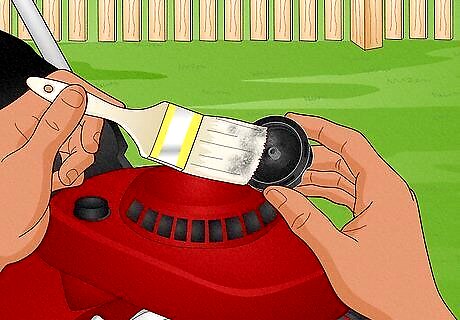
If the mower starts, sputters, and quits, it’s likely the fuel cap vent. Most gas lawnmowers use a vented air cap that is designed to let excess pressure out of the fuel tank while providing enough airflow for the fuel to pour smoothly into the engine. If that cap is dirty, the mower will start then shut down. Remove that cap and clean the vent by rinsing it out with water. If you’re struggling to clean the vent, use a clean paintbrush to wipe the opening. If you replace the cap after cleaning it and the mower continues to turn on and shut down, the cap likely needs to be replaced.
Replace the gas.
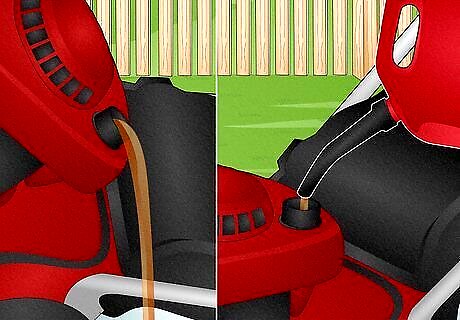
If you’re still struggling to start it, consider the age of the fuel. If it has been a long time since you’ve used your lawn mower, the gas may have just gone bad. You can tell the fuel has soured if the mower has trouble starting but the starter rope isn’t hard to pull, the mower won’t stay on, it idles rough, or weird noises are coming from the engine. Simply drain the tank and refill it with fresh fuel to see if that fixes the issues. You can usually smell bad gas, too. Expired gas won’t have that pungent, strong odor you normally have with fresh fuel. If you go 6 to 12 months at a time without needing to refill the mower’s gas tank, add a fuel stabilizer to the tank. The stabilizer will extend the life of the fuel in the tank.
Close and reopen the shutoff valve.
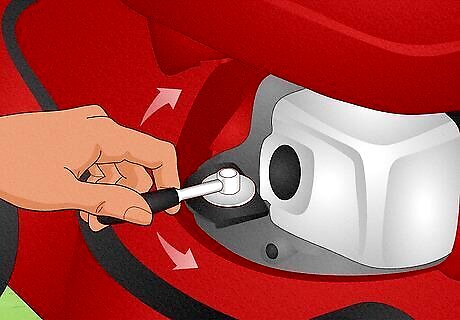
A sticky or stuck shutoff valve will keep fuel from flowing freely. Some lawnmowers have a shutoff valve designed to cut the flow of fuel off if the engine catches fire or the mower starts leaking. If that valve gets stuck or gunk builds up inside of the rim of that valve, it can throttle the flow of fuel and make starting the mower impossible. Try opening and closing that valve repeatedly. This should shake off any debris and improve the flow of fuel. You can also gently tap each side of the fuel line with a wrench or screwdriver to shake loose dirt trapped inside the fuel line.
Inspect the safety release cable.
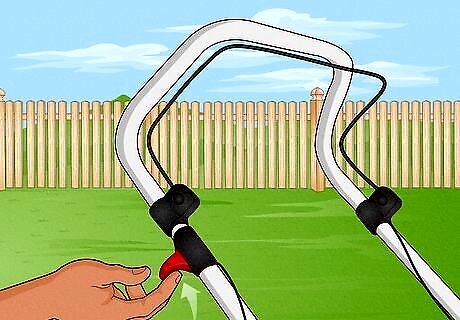
The oddly named “deadman’s control” may be the culprit. Every modern mower has a safety feature called the “deadman’s control.” It’s designed to keep the mower from turning on and running when someone isn’t present to monitor the mower. If you don’t engage the deadman’s control while you start the mower, the engine won’t actually crank. Refer to your manual if you can’t figure out how to engage the control while starting the mower. Typically, you engage the deadman’s control by pulling a handle and holding it down against the hand railing. On some mowers, you push a button down on the hand railing.
Solicit some help.
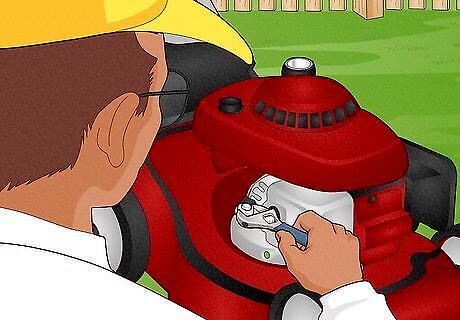
At this point, it’s best to just contact a lawn mower repair person. If you’ve checked all of the major components already and tried to complete a few repairs but the mower still won’t start, contact a professional. Look online to find a lawn mower repair company near you. It shouldn’t run more than $40-90 to get some help. In a pinch, you can even reach out to a landscaping firm for help. A lot of mom-and-pop shops have so much experience with mowers that they may be able to help.













Comments
0 comment